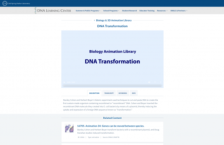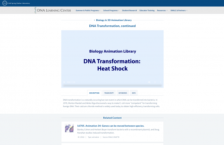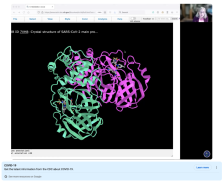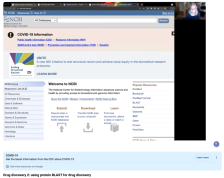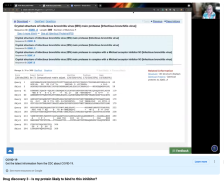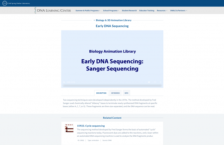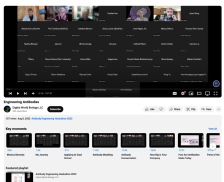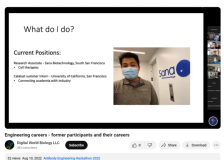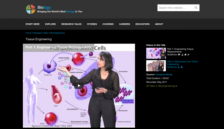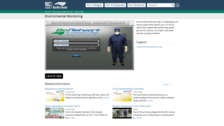Browse Resources
Resources |
|---|
Stanley Cohen and Herbert Boyer's historic experiment used techniques to cut and paste DNA to create the first custom-made organism containing recombined or 'recombinant' DNA. Cohen and Boyer inserted the recombinant DNA molecule they created into E. coli bacteria by means of a plasmid, thereby...
DNA transformation is a naturally occurring but rare event in which DNA can be transferred into bacteria. In 1970, Morton Mandel and Akiko Higa discovered a way to make E. coli more 'competent' for transforming foreign DNA. Their calcium chloride method is widely used today to obtain high-efficiency...
This video, provided by Digital World Biology, is from a series of tutorial videos for iCn3D, a web-based three-dimensional visualization and structural analysis platform for molecular structures. During this video, presenter Sandra Porter offers step-by-step instructions on how to view and analyze...
This video, provided by Digital World Biology, is from a series of tutorial videos for iCn3D, a web-based three-dimensional visualization and structural analysis platform for molecular structures. In this video, presenter Sandra Porter discusses using the protein Basic Local Alignment Search Tool...
This video, provided by Digital World Biology, is from a series of tutorial videos for iCn3D, a web-based three-dimensional visualization and structural analysis platform for molecular structures. This tutorial builds on the previous video in the series: Drug Discovery 2: Using Protein BLAST For...
Two sequencing techniques were developed independently in the 1970s. The method developed by Fred Sanger used chemically altered 'dideoxy' bases to terminate newly synthesized DNA fragments at specific bases (either A, C, T, or G). These fragments are then size-separated, and the DNA sequence can be...
This video, provided by Digital World Biology, is from the 2022 Antibody Engineering Hackathon, an event where teams collaborated to develop Course-based Undergraduate Research projects (CURES) for students studying biotechnology. The first half of the video features presenter Monica Berrondo's...
This video, provided by Digital World Biology, is from the 2022 Antibody Engineering Hackathon, an event where teams collaborated to develop Course-based Undergraduate Research projects (CURES) for students studying biotechnology. In this video, former Antibody Engineering Hackathon participants...
This lecture from the iBioSeminars project is presented by Sangeeta Bhatia from the Massachusetts Institute of Technology and the Howard Hughes Medical Institute covers the concept of engineering tissues that are part cell and part synthetic material, proposed nearly 20 years ago. This lecture...
The North Carolina Community College System BioNetwork's interactive eLearning tools (IETs) are reusable chunks of training that can be deployed in a variety of courses or training programs. IETs are designed to enhance, not replace hands-on training. Learners are able to enter a hands-on lab...
|
| ← PreviousNext → |
